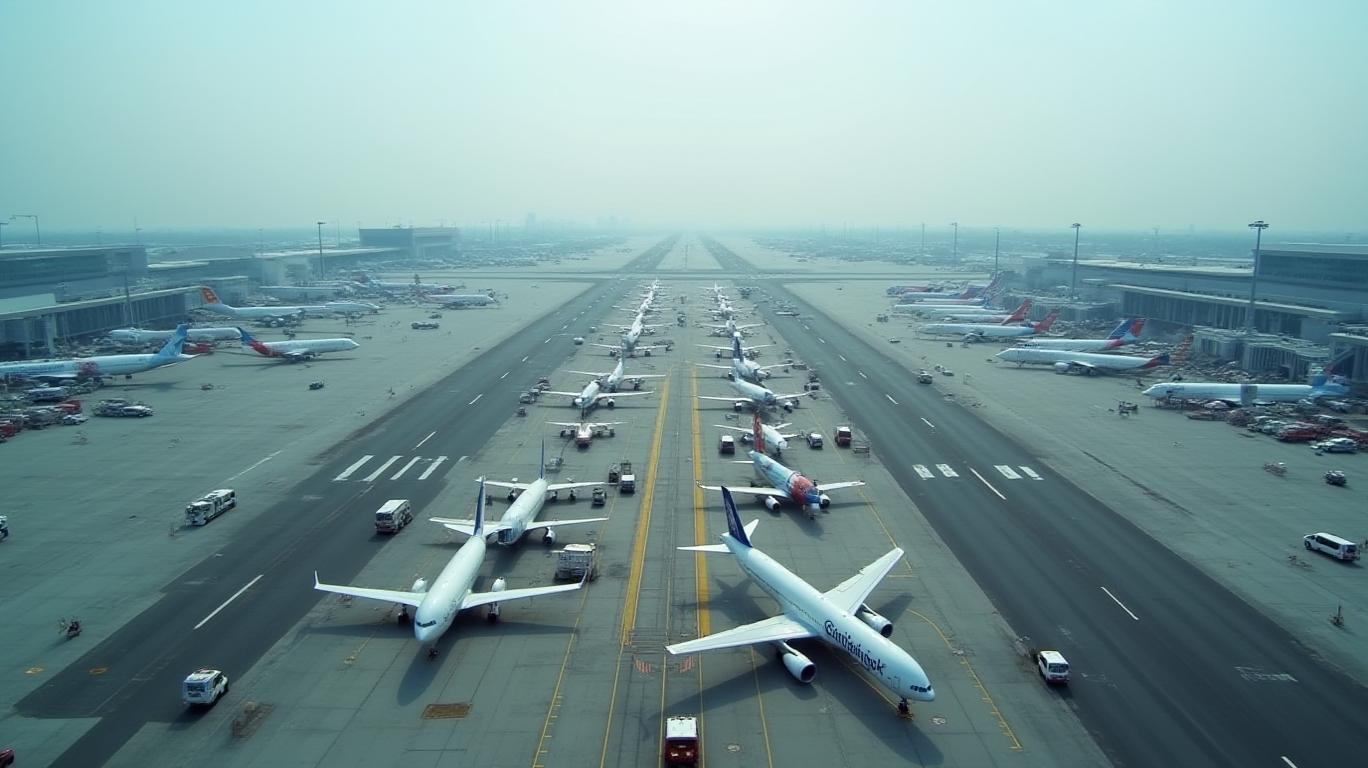United Airlines' Flight Cancellations at Newark: A Glimpse into FAA's Structural Crisis and Investment Implications
The recent decision by United Airlines to cancel 10% of its daily flights from Newark Liberty International Airport (EWR) has exposed deep-seated systemic issues within the U.S. Federal Aviation Administration (FAA). The move, driven by chronic staffing shortages, outdated air traffic control (ATC) technology, and infrastructure constraints, underscores vulnerabilities in the nation’s aviation infrastructure that could reverberate across the airline sector. This article examines the root causes of the crisis, its implications for United’s operations, and broader investment risks and opportunities.

Root Causes: FAA’s Structural Failures
The cancellations stem from three interlinked factors:
Staffing Shortages: The FAA’s Philadelphia TRACON facility, which manages Newark’s airspace, faces a 20% reduction in air traffic controllers due to walkouts and attrition. With a nationwide shortage of 3,000 controllers, staffing levels at Newark are insufficient to handle peak demand.
Outdated Technology: The FAA’s reliance on 1960s-era systems has led to recurring equipment failures. A 2023 nationwide outage highlighted the fragility of this infrastructure, and modernization efforts remain underfunded. United CEO Scott Kirby has criticized the FAA’s “chronic underinvestment,” which exacerbates delays and safety risks.
Infrastructure Constraints: A $121 million runway rehabilitation project at Newark, closing one of its main runways until mid-2025, has further strained capacity. Ground Delay Programs (GDPs) now add over two hours to flight times, with delays spiking to 40% of flights by late 2024.
Impact on United Airlines
The cancellations directly impact United’s operational efficiency and profitability. A 10% reduction in Newark flights translates to lost revenue from premium routes to hubs like San Francisco and Chicago. However, the move also aims to mitigate reputational damage from cascading delays, which averaged 92 minutes in early 2025, with some stretching to 25+ hours.
Investors should monitor:- Revenue Per Available Seat Mile (RASM): Reduced capacity may temporarily boost pricing power, but sustained cancellations could erode customer loyalty.- Operational Costs: Grounded aircraft and rebooking expenses could strain margins.- Regulatory Responses: United’s push for slot controls at Newark, akin to LaGuardia and Reagan National airports, could stabilize demand but reduce flexibility for future growth.
Broader Industry Implications
The crisis is not isolated to United. The FAA’s staffing and tech issues threaten all U.S. airlines during peak travel periods. Delta Air Lines (DAL) and American Airlines (AAL) have also faced delays at Newark, though their smaller footprints there limit immediate exposure.
The FAA’s modernization plans, including a $43 million budget for controller training and the Surface Awareness Initiative (SAI) deployment by mid-2025, are critical but may not resolve issues quickly. Analysts warn that systemic fixes could take years, with the National Air Traffic Controllers Association (NATCA) estimating a 3,000-controller deficit persists despite recruitment bonuses.
Investment Considerations
- United Airlines (UAL): Short-term volatility is likely, but the cancellations may prevent deeper losses. A recovery in travel demand post-summer could stabilize its stock.
- FAA Infrastructure Plays: Companies like Boeing (BA) and Collins Aerospace (COL) may benefit from long-term ATC modernization contracts.
- Airline ETFs: The iShares U.S. Aerospace & Defense ETF (ITA) offers diversified exposure to sector-wide risks and opportunities.
Conclusion
United’s flight cancellations are a symptom of the FAA’s structural crisis—a mix of underfunded staffing, outdated tech, and delayed infrastructure upgrades. While the immediate impact is localized to Newark, the broader sector remains vulnerable to recurring disruptions. Investors should prioritize companies with exposure to FAA modernization (e.g., Boeing) and airlines demonstrating resilience through route diversification or regulatory advocacy.
Key data points reinforce the urgency: - FAA delays rose to 34% at Newark in late 2024 (FlightAware), with over 1,400 cancellations in a single week.- The DOT’s $5,000 bonuses for new controllers and $43M training budget signal recognition of the crisis, but execution timelines remain uncertain.
In this environment, patience and a focus on long-term structural reforms—not short-term flight cancellations—will define investment success.


_442a2dcc1749832873286.jpeg)
_e68fac6d1749831664430.jpeg)






